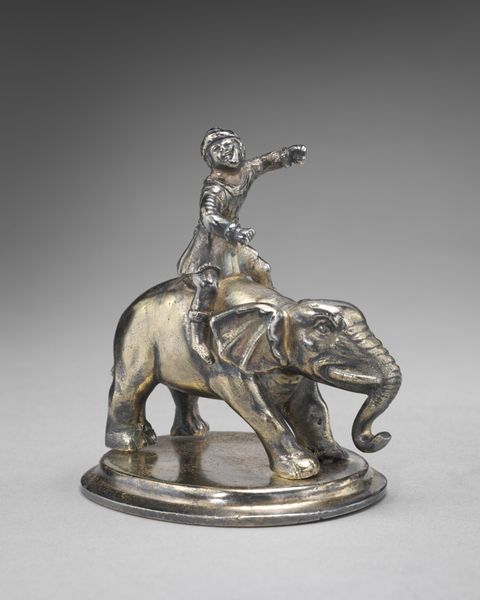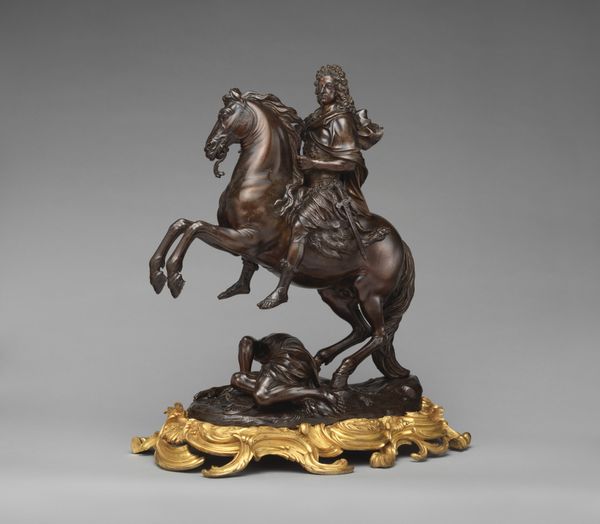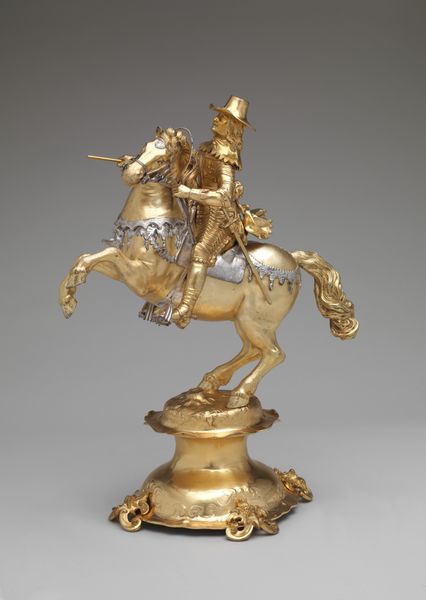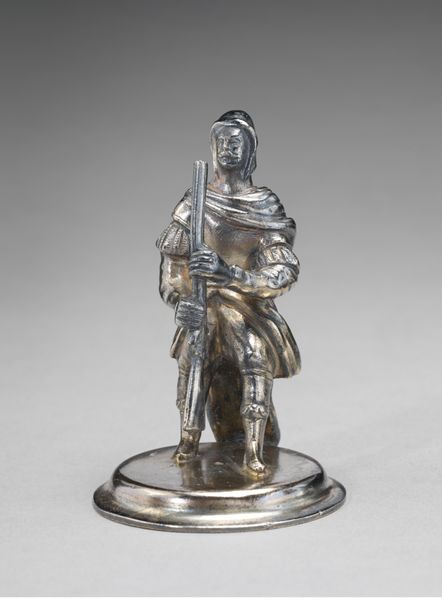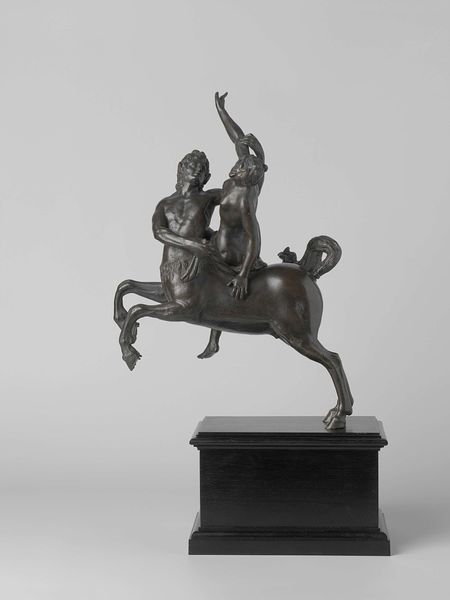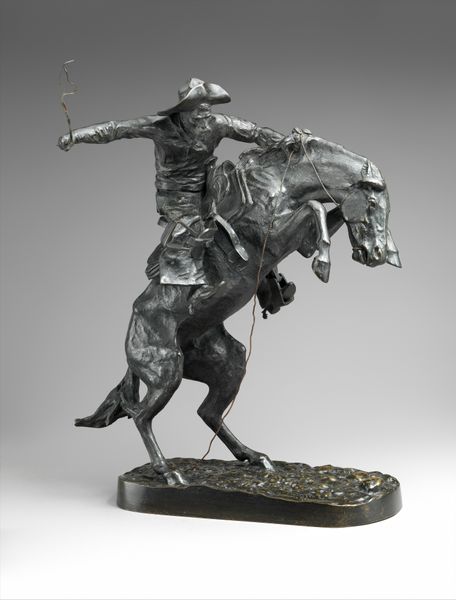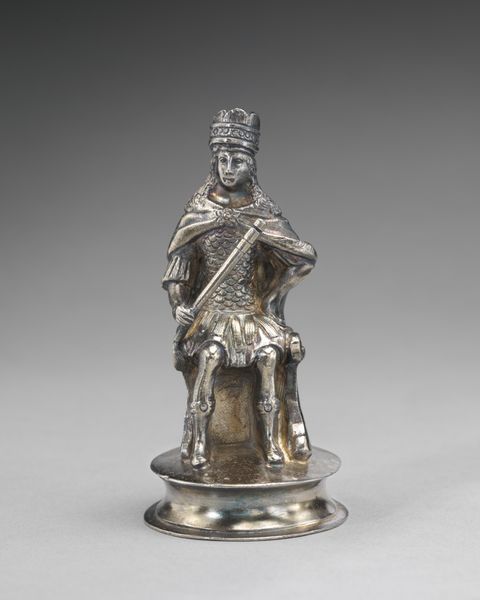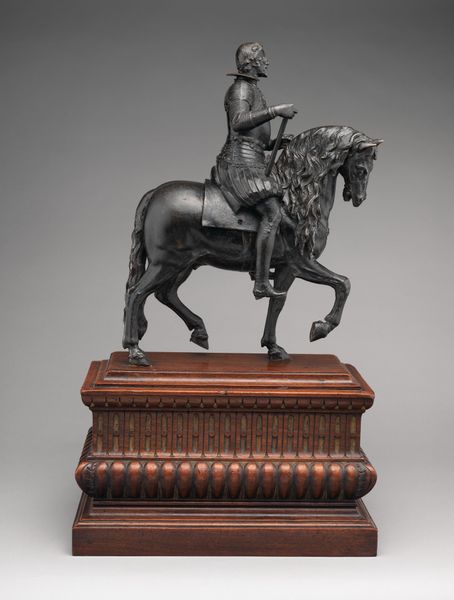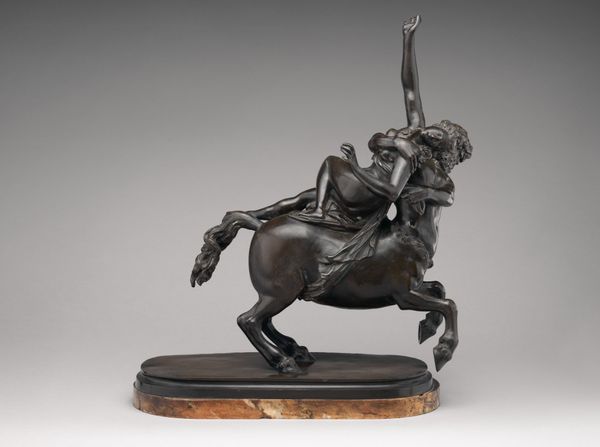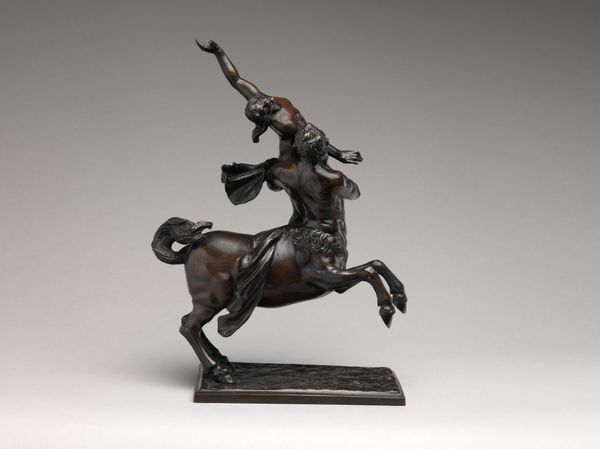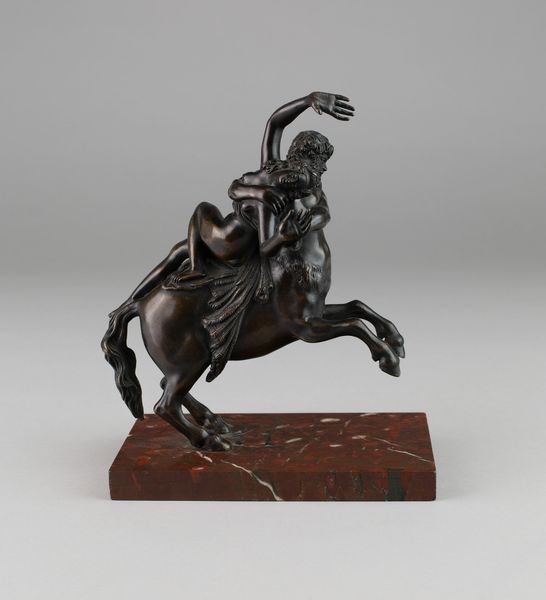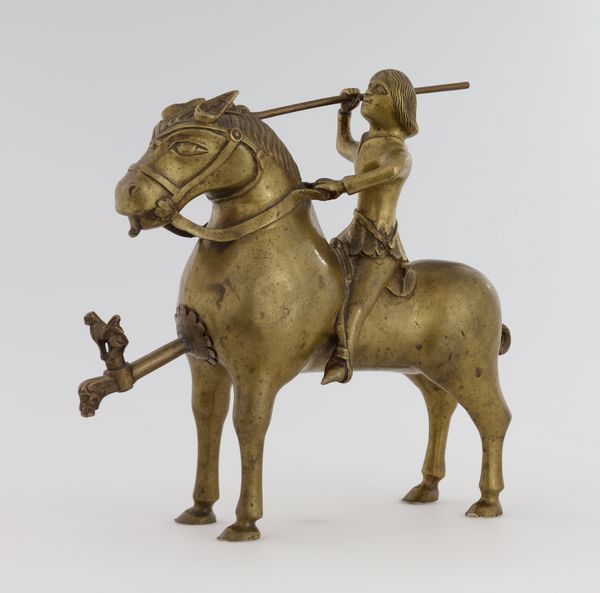
metal, sculpture
#
metal
#
sculpture
#
figuration
#
sculpture
#
decorative-art
Dimensions: Height: 2 7/16 in. (6.2 cm)
Copyright: Public Domain
Curator: Here we have "Chessman (Knight)" made sometime between 1850 and 1875 by Elkington & Co. Editor: My first thought is: miniature power! There's something charmingly defiant about capturing such a symbol of authority in such a diminutive form. It almost feels like a commentary on the era it was created in. Curator: Well, the "how" is quite compelling. It's metalwork, of course, likely silver given the era, but consider the process to achieve that level of detail. Mass production was a huge consideration for metalworking at the time, even with luxury items like this. Were they die-cast? Was each piece individually chased? That labor, and that kind of reproducibility of a supposed symbol of the aristocracy, becomes quite subversive in itself. Editor: Absolutely. And it's not just about mass production but who had access to it. Decorative art pieces like these were often used to telegraph the social status of its owner. These chess pieces and objects signaled cultivated taste and privilege, and perpetuated this exclusivity. Do you think, because these items existed, it opened the door for new artisans from marginalized people? Curator: Perhaps, but on the other hand, while decorative arts *might* have expanded opportunity, we have to recognize that artistic circles are always sites of ideological struggle as much as they are sites of potential emancipation. If these types of pieces are manufactured in factories, what impact does that have on those workers who aren't celebrated in these pieces but do the work? It’s all intertwined! Editor: A reminder that aesthetics can obscure just as much as they reveal. I do see some value, though, in acknowledging the quiet rebellion present when symbols like knights on horseback are crafted with techniques that are available for the commoners, almost diluting the singular heroism they used to convey. The power of knights loses its aura of superiority if metal workers are able to crank out replicas for parlor games, wouldn’t you say? Curator: It certainly complicates the narrative of idealized chivalry and social structures of the period. Reflecting on that kind of shift makes this "Chessman" more intriguing than it first seems. Editor: For sure. When viewed as a small monument to cultural friction, it gains depth.
Comments
No comments
Be the first to comment and join the conversation on the ultimate creative platform.
